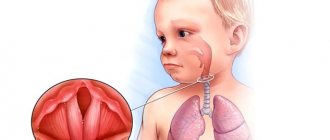- home
- Diseases and treatment
- Balanitis, balanoposthitis
Balanitis is a fairly common disease that manifests itself as inflammation of the glans penis. There is also another disease - posthitis, which is detected when the foreskin covering the head becomes inflamed. The accumulation of secretions under the foreskin causes balanitis. These diseases almost always accompany each other, so they are called by the common word balanoposthitis. The disease balanoposthitis occurs when both parts of the penis (the glans penis and the flesh) are inflamed. In both cases, the disease is mainly associated with a narrowing of the foreskin, which prevents complete cleaning of the urethra, and contributes to the appearance of a local infection. Perhaps this is why almost everywhere balanoposthitis and balanitis are used as synonyms, naming the same disease associated with the appearance of an unpleasant disease in men, accompanied by purulent discharge. This ailment affects approximately 11% of men who visit a urologist. Balanoposthitis also occurs in women, although much less frequently. It affects the upper part of the clitoris and the inside of the vagina.
Among people at risk of getting this disease, doctors identify patients with diabetes mellitus and people with phimosis. In the first case, the disease is provoked by a high concentration of sugar in the urine. Remaining on the head after urination, it promotes the rapid development of microorganisms and bacteria. With phimosis, it is impossible to fully open the head for hygiene procedures, which also contributes to the development of the disease. Another large group at risk of developing phimosis or balanoposthitis are patients with sexually transmitted diseases.
Causes of balanitis
There are three groups of factors that provoke the development of penile balanitis.
- Infectious lesions (circinar balanitis) are caused by viruses (including papillomavirus), bacteria (chlamydia), fungi (yeast-like fungi of the genus Candida), in addition, pathological microflora (streptococci, treponema, gonococci);
- Allergic reactions to aggressive detergents, latex condoms, lubricant components, synthetic fabric of underwear.
- Systemic diseases of the body - diabetes mellitus, lichen sclerosus - can cause erosive, fungal and other types of balanitis. Sometimes balanitis on the penis appears after surgical interventions on the male genitals.
Balanitis in children in most cases is a consequence of poor hygiene of the external genitalia or phimosis - narrowing of the foreskin and, accordingly, incomplete opening of the glans penis. Allergic and contact dermatitis as a reaction to detergents and synthetic clothing also contribute to the development of the disease. The frequency of relapses may correlate with the incidence of other infectious diseases. If a child over eight years old has inflammation of the foreskin too often, it is advisable to examine him for the presence of diabetes.
Dermatoses affecting the genital organs are not always sexually transmitted; they can be divided into 2 groups: venereal and non-venereal. Non-venereal genital dermatoses in men include a wide range of diseases of various etiologies [1], classified into 5 groups based on pathogenesis:
- inflammatory diseases (psoriasis, seborrheic dermatitis, lichen planus);
— infections and infestations (scabies, dermatophytosis);
- congenital disorders (median suture cyst);
- benign anomalies (Fordyce angiokeratoma, seborrheic cyst);
— precancerous and malignant lesions (Keir's erythroplasia, squamous cell carcinoma) [2].
Most often, a specialist is consulted with balanoposthitis of various etiologies. The term "balanitis" describes inflammation of the skin of the glans penis, and "posthitis" describes inflammation of the foreskin. In practice, both areas are often affected together, and then the term “balanoposthitis” is used.
Inflammatory conditions of the penis can occur at any age, are more common in men with primary phimosis, and can also cause secondary phimosis. It is not unreasonably believed that circumcision can protect against inflammation of the penis [3-5].
Balanitis is common in uncircumcised men due to poor hygiene and aeration, and in many cases preputial dysfunction is a causative or contributing factor. A Brazilian study of men screening for prostate cancer found balanoposthitis in 12% [6]. The prevalence was 58% higher in men with a history of nonspecific urethritis [6]. Balanitis can be serious in the presence of certain diseases. It has been reported that candidal balanitis may be particularly severe in patients with diabetes mellitus [6, 7], thereby contributing to their sexual dysfunction.
Balanitis can result from exposure to drugs, such as some common antibiotics, and allergens, including latex condoms, propylene glycol in lubricants, some spermicides, and corticosteroids. Ammonia released from urine as a result of bacterial hydrolysis of urea can cause inflammation of the glans and foreskin. Another common irritant responsible for contact dermatitis is frequent washing with soaps that contain allergens or irritants.
Various types of bacteria and yeast can cause inflammatory diseases of the penis. C. albicans is the most common fungal isolate of the penis [8]. Fungi are part of the normal flora, but under certain conditions their overgrowth can occur, especially in diabetic patients with phimosis. Genital yeast infection is rare in healthy people, but in people with weakened immune systems (HIV infection, diabetes and cancer), C. albicans can also cause bloodstream infections with serious consequences [9].
Candida colonization was observed in 16% of men attending a sexually transmitted disease clinic in Coventry, UK [10]. Bacterial superinfection with streptococci or staphylococci increases pain. Bacteria, especially Streptococcus spp., themselves are the second most common cause of infectious balanitis. Less commonly, the cause is Haemophilus parainfluenzae, Klebsiella spp., Staphylococcus epidermidis, Enterococcus, Proteus spp., Morganella spp. and Escherichia coli [11].
Chlamydia trachomatis, genital mycoplasmas, and bacterial STIs such as Neisseria gonorrhoeae, Haemophilus ducreyi, and others may be associated with balanitis and balanoposthitis [11]. Gardnerella vaginalis is responsible for symptomatic anaerobic balanitis [11]. The prevalence of G. vaginalis was 15 and 25% among heterosexual patients in STD clinics in London [12] and Alabama [13], respectively. Other causes of balanitis and balanoposthitis include viral STIs, such as high-risk human papillomaviruses, and parasitic infections, such as Trichomonas vaginalis, which are more common in uncircumcised men [11].
Inflammation of the skin of the glans penis and foreskin is painful and may be accompanied by bleeding, especially with lichen sclerosus, phimosis and paraphimosis.
In the treatment of balanoposthitis, antibacterial and antimycotic drugs are most often used; antifungal drugs, used sequentially until symptoms disappear, can be effective in the treatment of sexually acquired balanitis [14]. However, in patients at increased risk (phimosis and/or diabetes), frequent relapses are possible. In such cases, it is important to treat the partner to reduce the risk of re-inflammation.
Combination preparations containing both an antibiotic and an antimycotic demonstrate good effectiveness for inflammation of the skin of the glans penis and foreskin. For example, Tetraderm cream (JSC Vertex, Russia). It contains mometasone furoate, gentamicin, econazole and dexpanthenol.
Mometasone furoate is a synthetic glucocorticosteroid that has local anti-inflammatory, antipruritic and antiexudative effects due to the induction of lipocortins that inhibit phospholipase A2. Gentamicin is bactericidal and active against gram-positive and gram-negative microorganisms. Econazole in the drug is a synthetic derivative of imidazole and has an antifungal and antibacterial effect, inhibits the biosynthesis of ergosterol, which regulates the permeability of the cell wall of microorganisms. Active against dermatophytes, yeast-like fungi of the genus Candida, as well as some gram-positive bacteria (streptococci, staphylococci). Dexpanthenol, also known as vitamin B5, stimulates skin regeneration and normalizes cellular metabolism [15].
Tetraderm cream is applied 2 times a day (morning and evening) to inflamed areas, the course is 10-14 days, depending on the dynamics of the skin process. As our own observations show, a statistically significant clinical effect for balanoposthitis can be achieved already by the 5th day of use. It is important to note that the drug must be used until clinical manifestations are completely resolved.
We present a clinical case.
Patient G. presented with a rash on the skin of the penis that appeared after sexual intercourse using a lubricant with an stimulating effect. Skin manifestations of allergy appeared 6 hours after contact; the use of regenerating agents from a home medicine cabinet aggravated the clinical manifestations. On examination, hyperemia and erosions with a whitish coating were noted (Fig. 1) . Microscopic examination revealed Candida alb. and coccal flora. Treatment was prescribed, including an antihistamine (ebastine 10 mg once a night, 7 days) and topical Tetraderm cream 2 times a day. When re-examined after 5 days, the acute inflammatory manifestations resolved, the erosions were almost completely epithelialized (Fig. 2) . It is recommended to continue using Tetraderm cream until the areas of hyperemia completely disappear, approximately 5 days.
Rice. 1. Hyperemic lesions, erosions (before treatment).
Rice. 2. There is a regression of inflammatory manifestations, a complete reduction of whitish plaque.
Balanitis and balanoposthitis are common and often occur against the background of allergic reactions to personal hygiene products and sex cosmetics. If there is a suspicion that an allergic component is the basis of the inflammatory reaction, it is necessary to conduct allergy tests, which will allow the patient to further exclude contact with the allergen, and therefore reduce the risk of re-development of balanoposthitis. In addition, taking into account the characteristics of this anatomical area, one should not exclude the addition of a fungal and/or bacterial infection in case of any minor violations of the skin barrier. Even in the absence of obvious manifestations of a secondary infection, it is better to conduct laboratory screening, which will allow choosing the optimal therapy in each case.
The authors declare no conflict of interest.
The authors declare no conflict of interest.
Symptoms of balanitis (balanoposthitis)
Symptoms of balanitis can be grouped into three groups.
- Discomfort in the area of the head of the penis: burning, itching, pain, pain. Due to the increased sensitivity of the organ, the duration of sexual intercourse may decrease.
- The appearance of red spots or redness of the entire glans and foreskin, the skin becomes thinner (looks like parchment), the mucous membrane dries out, cracks and ulcers may form.
- Intense discharge, the volume of which significantly exceeds the normal amount of smegma (the secretion of the sebaceous glands of the mucous membrane of the head of the penis), up to soaking through the underwear.
The appearance of symptoms of even one group confirms the presence of balanitis.
Treatment of balanoposthitis
Balanitis can be treated in many ways. It depends on the specific reason. The most important step that anyone who wants to learn how to treat balanoposthitis should take is visiting our clinic, and not unacceptable self-medication, which has helped someone.
Effective treatment of balanoposthitis can only be achieved by following hygiene procedures. At least once a day it is necessary to treat the penis with alkaline soap and warm water. A shower after sexual intercourse is mandatory. Sitz baths with chamomile added to the water promote rapid healing of wounds and recovery. Antiseptic ointments can also help restore the health of the flesh and frenulum.
Consultation on paid services
Show phone numbers
Risk factors
The risk of developing balanitis continues throughout a man's life. At the same time, both non-compliance with the principles of personal hygiene and excessive care of the penis can cause a lack or excess of smegma. Urogenital pathologies (injuries, frenulum), weakened immunity (chemotherapy, taking hormones) can contribute to the development of the disease. The negative effects of chlorinated tap water, local contraceptives, and synthetic underwear should not be discounted.
Symptoms
Inflammation of the glans begins with the appearance of spots and redness on the skin of the penis. Further, symptoms of balanitis in men occur, such as itching, burning, discomfort when trying to expose the tip of the penis. Pain appears during sexual intercourse.
As symptoms develop, inflammation of the head of the penis is accompanied by swelling, rash, and purulent whitish discharge. Patients experience difficulty urinating. Symptoms of balanitis are accompanied by aching pain, in rare cases – ulcerative lesions and erectile dysfunction.
According to the duration of symptoms, balanitis on the penis has an acute and chronic form.
Chronic balanitis has mild symptoms, and the acute condition often recurs due to a number of factors (decreased immunity, hypothermia).
Acute balanitis in men is divided into simple (catarrhal), erosive and gangrenous. With simple balanitis, inflammation of the head in men occurs in a mild form. Symptoms include hyperemia, swelling, itching and burning, and sometimes purulent discharge.
Erosive balanitis is characterized by the death of epithelial cells, the formation of whitish areas of skin, in place of which red erosions with maceration form. The pain syndrome intensifies.
With the gangrenous form of inflammation of the head of the penis in men, necrotic ulcers and severe swelling of the skin appear. This is accompanied by an increase in body temperature and malaise.
When the head of the penis becomes inflamed in boys, the threat is posed by possible complications that arise when the acute form becomes chronic. At this stage, there is a risk of adhesions and deformation of the penis. Also among the symptoms of inflammation of the head of the penis in a child are high body temperature (up to 39°), enlarged lymph nodes in the groin area, moodiness and sleep disturbances.
Preparations for topical use
- Antibacterial agents: chloramphenicol (Syntomycin); sulfonamide (Streptocide ointment), tetracycline (Tetracycline ointment), metronidazole (Rozamet)
- Antiseptics: miramistin, chlorhexidine.
- Anti-inflammatory drugs with antipruritic effect: triamcinolone (Fluorocort)
- Agents for tissue regeneration and wound healing: chloramphenicol (Levomekol), dexpanthenol (Bepanten, Pantestin).
- Antimicrobial and antifungal: fluconazole (Flucorem); clotrimazole (Clotrimazole), omoconazole nitrate (Mycogal).
Diagnostics
Before treating inflammation of the glans in men, it is necessary to undergo a complete diagnosis. To carry out effective treatment, it is important to establish the cause of the disease. To relieve inflammation of the head of the penis, it is necessary to conduct a series of studies. In order to determine the susceptibility of pathogenic flora to the planned treatment of inflammation of the head, biomaterials are collected. A blood test is performed for the presence of infections (hepatitis, HIV, syphilis), a general blood test, a general urinalysis and a biopsy of the affected areas.
Recommendations and contraindications for balanoposthitis
The patient must maintain hygiene daily. It is important to treat the head of the penis with antiseptics, for example, Chlorhexidine. First of all, inflammatory processes are caused by infections in the partner. It is important that the woman goes to the gynecologist and gets cured. During the treatment period, you should not have unprotected contacts. It is recommended to give up bad habits and lead a healthy lifestyle. Urologists do not recommend wearing tight underwear for men.
If a man has balanoposthitis, the reasons may be different. The disease can be chronic for a long time. In an advanced stage, it leads to consequences including tissue death. The disease is treatable, but it is better to prevent its development. It is enough to follow the rules of hygiene and undergo regular preventive examinations.
Treatment of infections in men, treatment of infertility, solving problems with the prostate, urethritis - this is the specialty of our medical center.
Make an appointment. Make an appointment
Balanoposthitis in a child
Balanoposthitis in children is one of the most important problems in pediatrics, pediatric surgery and pediatric urology, since the reproductive and sexual health of men in the future depends on competent prevention, timely and high-quality treatment of this disease. According to statistics, this pathology is diagnosed in approximately 6% of boys who have not undergone circumcision of the foreskin. It is also noted that children under 5 years of age are most susceptible to the disease.
The main reasons for the development of balanoposthitis in children are:
- lack of proper hygienic care of the genitals;
- physiological phimosis;
- synechiae of the foreskin;
- injury to the foreskin.
In some cases, the development of balanoposthitis can be triggered by the use of irritating cosmetic and hygiene products, incorrectly selected baby creams, diapers and household chemicals.
Causes of balanoposthitis
- Diabetes mellitus is the most common cause.
- Improper or insufficient personal hygiene.
- Allergy to care products (soap, shower gel, etc.).
- Fluid retention in the body (with heart failure, liver cirrhosis, kidney disease).
- Allergy to medications (vitamins, antibiotics, etc.) – allergic balanoposthitis.
- Obesity.
- Unprotected sexual intercourse with a partner suffering from vaginal dysbiosis (vaginal intercourse) or infectious diseases of the oral cavity (oral intercourse) and rectum (anal intercourse).
- Pathogenic flora (fungal, HPV, genital warts, gardnerella - the causative agent of bacterial vaginosis, Treponema pallidum - the causative agent of syphilis, Trichomonas - the causative agent of trichomoniasis, group A and B streptococci, anaerobic infection).
What types of balanoposthitis are there?
The severity of the disease depends on its stage. There are only three forms of the disease:
- Erosive - foci of reddish erosion and severe swelling appear. The man suffers from a constant burning sensation, possibly itching. Possible increase in temperature.
- Catarrhal - swelling, burning sensation, discomfort, formation of pus.
- Gangrenous is the most dangerous. Tissue necrosis is observed in the affected areas, and bleeding may begin. The genitals are reddish, the patient has a high fever.
There are several infectious varieties. Anaerobic balanoposthitis is caused by gram-negative bacteria. These include the causative agent of gonorrhea - gonococcus. Circinar balanoposthitis is easy to identify by spots with clearly defined boundaries; it is caused by chlamydia. When exposed to fungi of the genus Candida, the candidiasis type is isolated. In rare cases, there is an allergic reaction that can develop due to allergens.
Balanoposthitis in women
Balanoposthitis is a purely male disease. Meanwhile, sometimes this term is used to refer to vulvovaginitis - an inflammatory lesion of the vulva and vaginal mucosa. The disease is predominantly infectious in nature, and its causative agents are the same harmful microorganisms that provoke the development of balanoposthitis in men.
Signs of balanoposthitis in women are:
- discomfort, burning, pain and itching in the genital area, increasing during urination and when walking;
- slight mucopurulent vaginal discharge.
If left untreated, vulvovaginitis can lead to the formation of adhesions (synechias) of the labia minora and the development of kraurosis of the vulva.
Treatment
Treatment of balanoposthitis is carried out using different methods:
- conservative methods;
- operation;
- treatment using alternative (traditional) medicine methods.
Clinics use the first 2 treatment methods. An individual treatment plan is drawn up for each patient.
Various medications are also prescribed by a specialist. Medicines are selected depending on the type of pathology and what infections it is caused by. For different types of balanoposthitis, treatment with tablets or ointments will be different. It happens that with balanoposthitis, an ointment for treatment is prescribed in conjunction with taking antibiotics.
Sometimes corticosteroids are prescribed, sometimes anti-inflammatory drugs. In some cases, zinc ointment treats balanoposthitis better than all other remedies. Therefore, it is important not to self-medicate, but to consult a specialist.
Balanoposthitis in men
Balanoposthitis in men requires immediate and competent treatment. In the absence of adequate and effective therapy, inflammation spreads to the urethra, contributing to the occurrence of urethritis. In addition, there is a decrease in the sensitivity of the penis, which negatively affects potency. If the first signs of balanoposthitis occur, be sure to contact an experienced urologist. At the Vasha Clinic medical center today you can get a 10% discount on the treatment of this disease - you just need to fill out the form on the website.
Diagnosis of balanoposthitis in men is made by a urologist. To confirm the diagnosis, the following tests and medical procedures may be required:
- initial examination;
- general urinalysis;
- biochemical and general blood tests;
- bacteriological analysis of urethral discharge;
- STD testing.
In some cases, the diagnostic process may require tests such as ultrasound of the urinary tract or urethroscopy.








